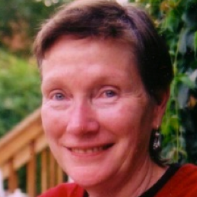It’s important to acknowledge ongoing sexism in the Buddhadharma, especially in the monastic world of Buddhadharma.
Though it’s been 2,550 years, nuns are still burdened with more rules than monks (348 rules for nuns compared to 250 for monks in the vinaya-pitaka).
Still, Buddha was remarkably advanced for his time. He went against the entire caste system, saying anyone, even an untouchable woman, not just Brahmins, could become enlightened and realize the true nature of mind.
It is true his aunt had to ask him three times before he was willing to create an order of nuns. But once he did that, initially there were no rules. The Vinya was created as monks, in particular, had problems with the nuns.
It’s not like most nuns did anything wrong, but to maintain celibacy, the monks seemed to be quite tempted, so all these petty rules (at least from our 21st century perspective) were worked out–like how far downstream from a monk should a nun wash her begging bowl? Or should a nun mend the hem of a monks garment? Or how far behind a monk should a nun walk? The list goes on and on, and on.
The present 17th Karmapa is actually working hard to establish equality for nuns, going against this remaining frozen “tradition” of sexual inequality within the world of Karme Kagyu monasticism.
But the whole issue doesn’t get me fixated, even though I did the three year retreat at Gampo Abbey and had to follow some of these monastic rules, because I am a lay yogini or practitioner, as are 99 percent of Shambhala Buddhists.
There have been many enlightened yoginis–and in our Tibetan inspired lineage, Padmasambhava’s foremost student and lineage holder in her own right was Yeshe Tsogyal (above painting by Chogyam Trungpa…for more click over to the amazing Chronicle Project). Another Tibetan yogini who bucked all the conventions of the times was Machig Lapdron. Marpa’s consort Dagmema, which means “egoless lady,” was also a teacher in her own right, and gave Milarepa the Six Dharmas of Niguma.
Today there is Jetsun Kushula –a Sakya teacher who lives in BC–and Khandro Rinpoche–who has a center in Virginia– to name just a few. And of course there is wonderful Pema Chodron. She and Khandro Rinpoche are inspiring monastic examples of the present day.
Personally, in the Shambhala Buddhist lineage tradition, I have never experienced sexism as a big problem.
Our Nalanda translators work hard to make all the liturgies gender and user friendly. And I never felt second best with the Vidyadhara Trungpa Rinpoche. I was always welcomed and had great access to him, even though I was no one important. Meditation centers were originally run by one woman, one man teams. Presently in our sangha there are many women acharyas and shastris (senior teachers). And finally, at Gampo Abbey, the nuns are treated with great respect.
Probably if more Western women were drawn to monasticism throughout the wide world of Buddhadharma, any remaining sexism would dissolve faster.
But, good grief, monasticism just doesn’t seem to be as natural a path, compared to what has always been available–the yogini or lay practitioner’s path, which includes all of life and brings everything we meet to the dharmic view and practice–all the joy and sorrow, sickness and emotions which arise sometimes all at once with work and family–the “rich and juicy” situations of life.











Read 26 comments and reply